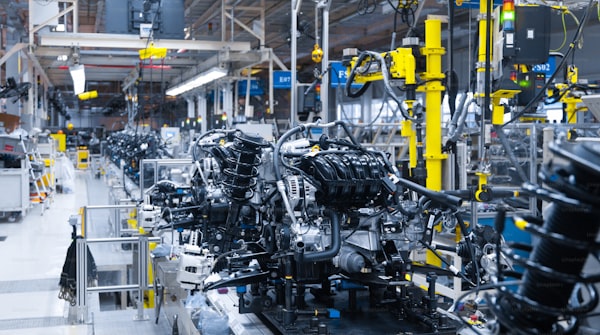Identifying new business opportunities for Siemens Factory Automation with AI

Summary
The team at Siemens Factory Automation is constantly scouting for new business opportunities. In the future, the team wants to augment their manual scouting methods with AI-enabled methods, including LLMs (large language models).
In order to develop this, we partnered with the team at Siemens Factory Automation and a team of students at the Technical University Munich. We built a custom AI agent that identifies new business opportunities, based on data about the current state of the industry. The agent then elaborates various aspects of each opportunity, such as expected technological challenges, business risks, and possible applications. Finally, the agent uses various models to evaluate each business opportunity against a range of criteria defined by Siemens Factory Automation.
General design of the AI agent
As mentioned above, the agent has three parts: Business opportunity identification, elaboration, and evaluation.
Business opportunity identification
For business opportunity identification, the agent first gets data like research papers, venture investments, and company information from the general field of interest. These data give the agent factual background on the current status of the field. Then, the agent identifies open questions that are not addressed by the collected data but that are closely related.
Opportunity elaboration
For each identified business opportunity, the agent then identifies likely technological challenges, business and market risks, and makes suggestions for how to decompose the opportunity into smaller steps. For each one of these elaborations, the agent draws on the data retrieved during the previous step, as well as on additional data (e.g. research papers).
Opportunity evaluation
For business opportunity evaluation, we created models of various decision processes. For business opportunity evaluation, we created models of various decision processes. For instance, we trained a model to simulate the team members’ reasoning using various ‘digital breadcrumbs’ that they volunteered for our project. These breadcrumbs included feedback they provided on previous product ideas and presentations where they described the general characteristics of a successful new product.
Results
The agent enables Siemens Factory Automation to identify and evaluate business opportunities more quickly and with fewer resources than the current method involving consulting projects. In particular, the agent identifies and evaluates hundreds of business opportunities, rather than just a handful as would be the case with a purely manual business opportunity scouting process. In numbers, this means:
Time to get results
- Before: two months
- Now: 20 minutes
Consultants needed
- Before: 2
- Now: 0
About Siemens Factory Automation
Siemens Factory Automation works toward the future of manufacturing. Together with customers and partners, Siemens Factory Automation develops manufacturing solutions that are sustainable, adaptive, secure, and connected—all the while thinking and acting in open ecosystems.
Project partner: Technical University Munich
For this project we partnered with a team of students from the TUM Entrepreneurship Research Insitute. The team designed, implemented, and tested models of the Siemens Factory Automation team decision process. Team members were Leonard David, Ferdinand Kohler, Yie Hang Lau, Johannes Lützenrath, and Jonas Pfannes.